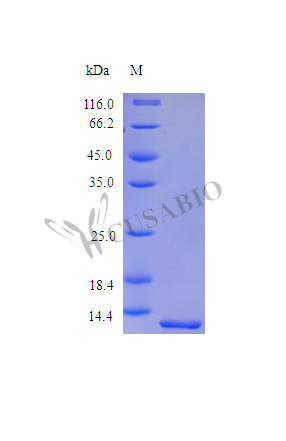The Recombinant Human MIA is a full-length, melanoma-derived growth regulatory protein encompassing the 25-131aa expression region. Manufactured in E. Coli, this protein is vital for immunology research. As a tag-free protein, MIA exhibits a purity of over 98%, as verified by SDS-PAGE and HPLC. Endotoxin levels are maintained below 1.0 EU/µg, as determined using the LAL method. MIA is fully biologically active, with an ED50 value of less than 5 μg/mL in a cell proliferation assay involving the human A375 cell line, indicating a specific activity of more than 200 IU/mg. The lyophilized powder form allows for straightforward storage and usage in a range of research applications.




